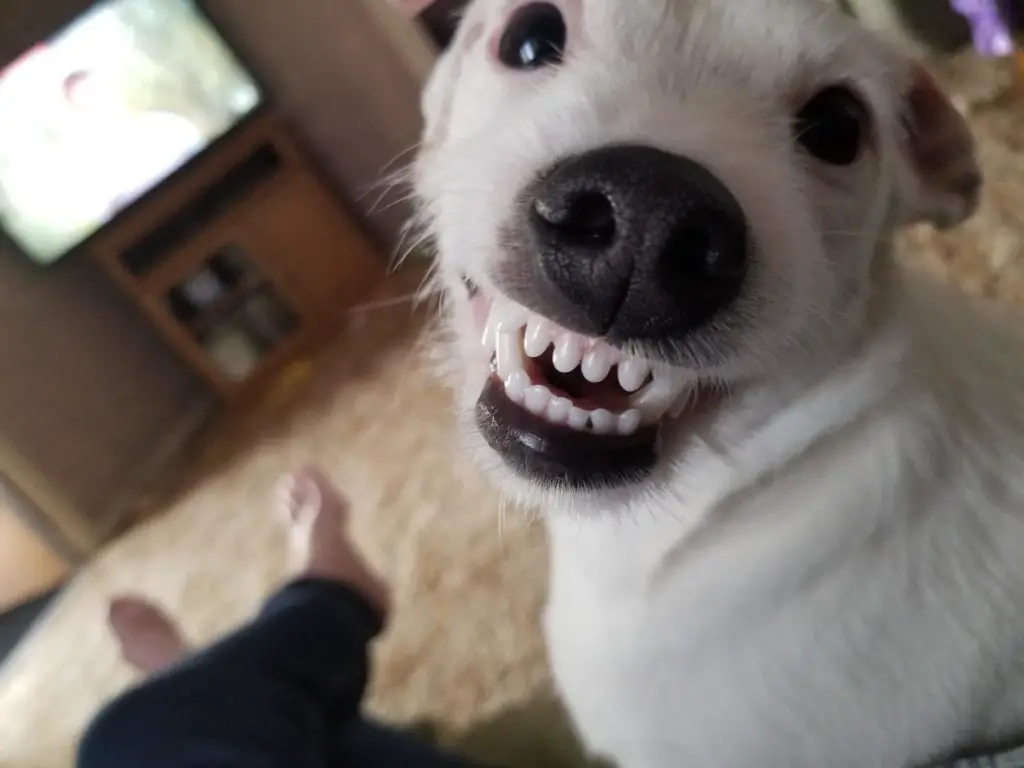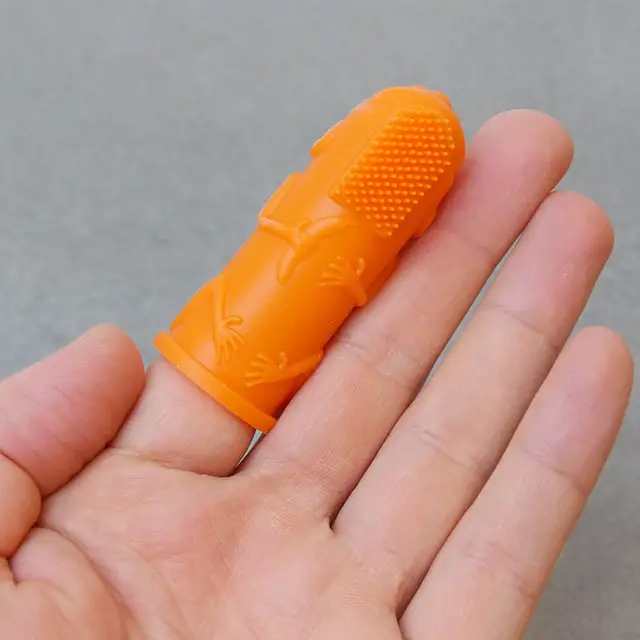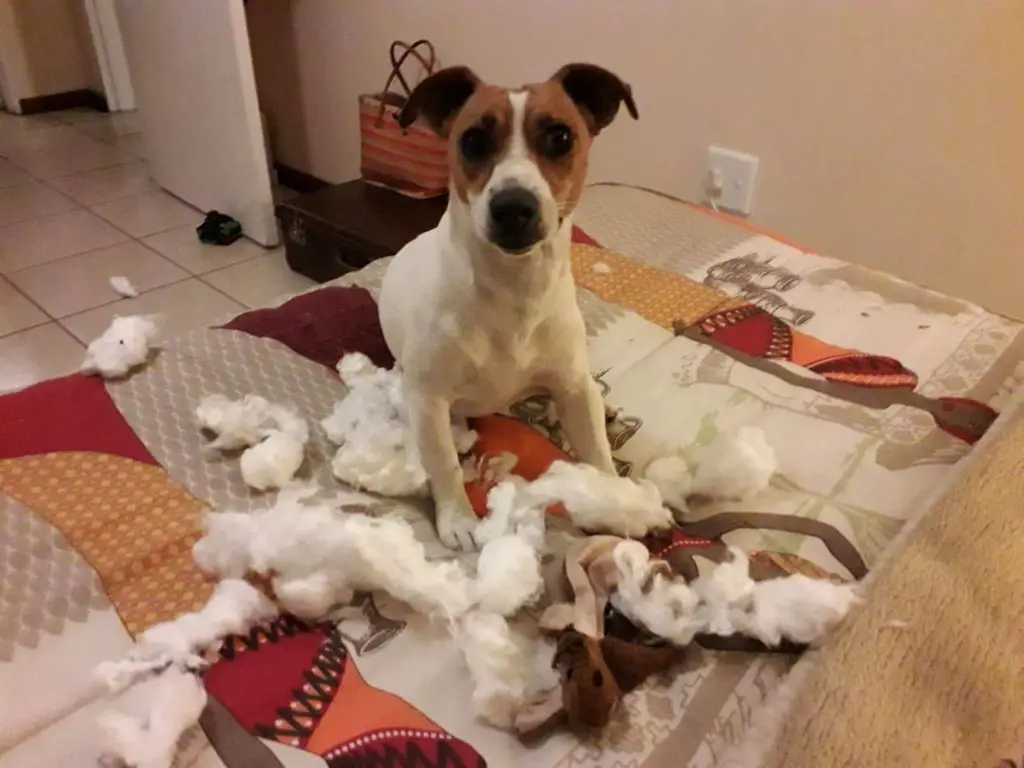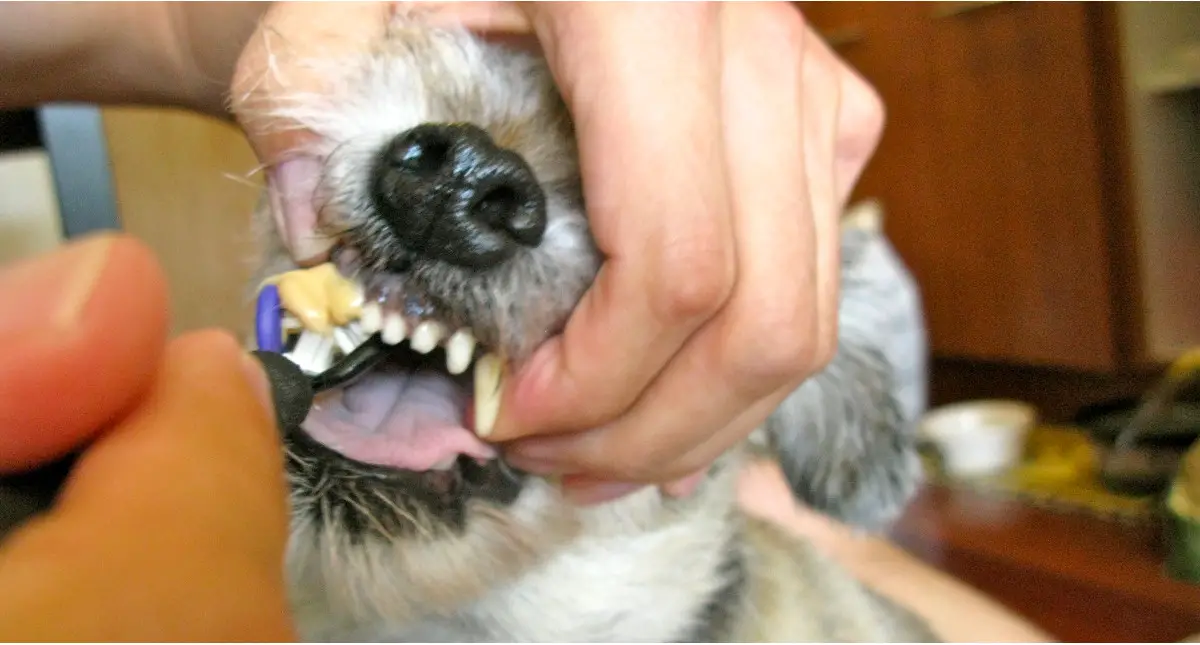Table of Contents
I think we all know the answer to that. Dogs need dental care as much as people do, and if you’re not doing a little bit now, you’ll be doing a lot later on. And it’ll cost you.
*This post may contain affiliate links. As an Amazon Associate we earn from qualifying purchases.
When I was growing up, no one thought to brush a dog’s teeth. But we’ve learned a lot since then. And, quite frankly, many of us have had more than one surprise doggy dental bill.

Dogs’ teeth can gather plaque, just like your teeth and mine. And, just like with humans, brushing our dogs’ teeth can clean it away, helping to prevent bad breath and tooth and gum disease.
Tooth brushing isn’t natural for a dog, and it can be frightening. But if you take a few precautions, you can make this a comfortable, and even fun process for both you and your pup.
How Often Should You Brush?

Web MD Pets recommends brushing your dog’s teeth daily. Of course not all dogs are going to be happy about this. If daily brushing is too much for you and your pooch, then three times a week, they say, can do a lot of good.
They also say that it helps to set a routine. Brushing once a day, at around the same time, and waiting until your pup is relaxed, will make things go a lot more smoothly.
What Will You Need?
Well, what do you use to brush your teeth?
Dog toothbrushes are a bit different from the ones we use. You can use a soft human toothbrush. But many people find it’s easier to use a finger-brush, especially with a small dog. A finger brush is a soft rubber sheath that goes over your finger. It has bristles or bumps that you can use to rub toothpaste over your dog’s teeth.

Dog toothpaste can be expensive, but it’s important that you use it, and not human toothpaste. Human toothpaste contains artificial sweeteners like saccharin and Xylitol, which can make your dog sick. Also, dog toothpaste comes in fun flavors like peanut butter and chicken. Yum! Er…yeah.
Now Comes the Tricky Part
How would you like it if someone held you down and stuck their hand in your mouth? Your dog won’t like it much, either. So, avoid the temptation to hold your dog down, stand over them, or otherwise behave in a threatening manner.
Instead, think of this as a gentle massage for the teeth and gums. Your doggy toothpaste should smell and taste good, so chances are, they’ll want it in their mouth, if you approach things the right way.
Once you’re in position, use your toothbrush to gently clean the teeth and gums in a circular motion. If you’ve never done this before, you can do a few practice sessions without toothpaste to get both you and your dog used to the idea. You can also brush a few teeth at each session, working up to a two-minute total brushing.
This vet shows you how.
According to Web MD Pets, if you can’t get all the teeth, try to focus on the outside of the canines, as well as the back teeth. These are the places that the most plaque tends to gather.
Brushing and Bonding
All the while, you should be comforting and praising your dog. After all, they’re putting up with quite a lot. Finish on a positive note, with praise and a treat. This can be a time to bond with your dog, and be close with them, as well as performing an important health maintenance routine.
Diet and Dental Care
Just like with humans, the right diet can go a long way toward helping your dog to maintain good dental health.
Veterinarian Shawn Messonnier recommends raw (never cooked!) bones for dental health. According to Messonnier, chewing on bones is good for teeth and gums. What’s more, chewing is a natural function that dogs enjoy. And if they’re not chewing on bones, they may start chewing something you don’t want them to!

There are a number of commercially available products that can also help your dog to maintain good dental health. The Veterinary Oral Health Council has a very complete list at their website.
Brush On!
Few dogs are immediately enthusiastic about having their teeth brushed. But that doesn’t mean it has to be unpleasant. If you are careful, gentle, and respectful of your dog, you can make this important health routine an enjoyable part of your dog’s life.
And save yourself from expensive surprise doggy dental bills.
Featured Image: CC BY 2.0 by torbakhopper, via Flickr

